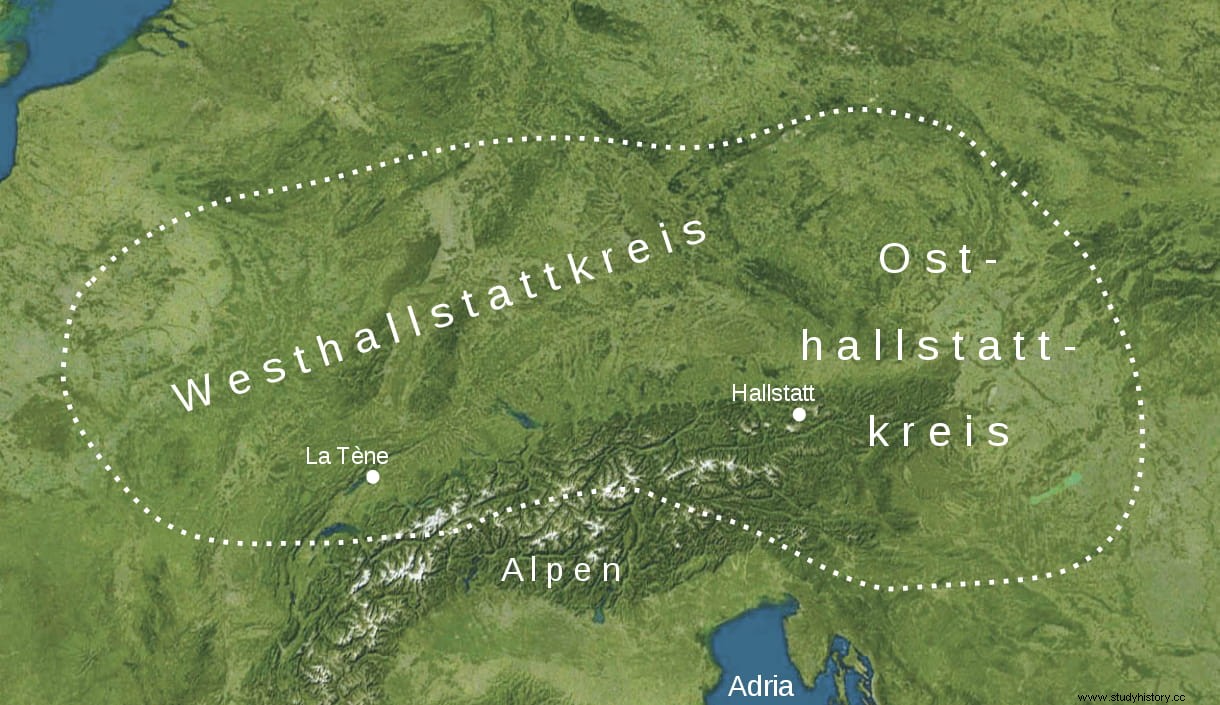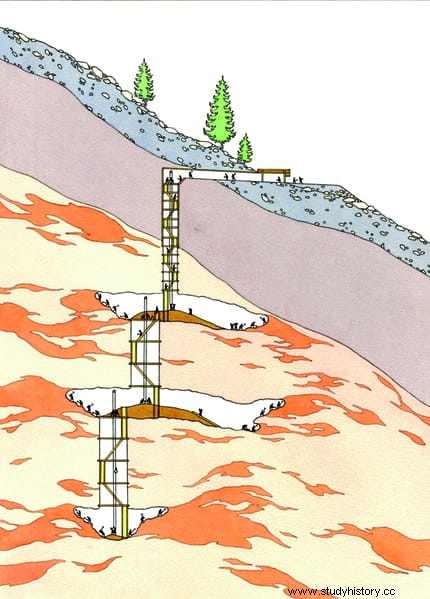Human feces do not usually remain for a long time, and even less so for thousands of years. But there are exceptions to this general rule in some places around the world, such as the prehistoric salt mines of Hallstatt-Dachstein/Salzkammergut, an Austrian UNESCO World Heritage Site.
Now, researchers who have studied ancient residue samples (or paleofeces) from these mines have discovered surprising evidence:the presence of two species of fungi used in the production of blue cheese and beer. The results appear in the journal Current Biology .

Genome-wide analysis indicates that both fungi were involved in food fermentation and provides the first molecular evidence for consumption of blue cheese and beer during Iron Age Europe says Frank Maixner of the Eurac Research Institute for Mummy Studies in Bolzano, Italy.
These results shed substantial new light on the lives of Hallstatt's prehistoric salt miners and allow understanding of ancient culinary practices in general on a whole new level , adds Kerstin Kowarik of the Natural History Museum in Vienna. It is becoming increasingly clear that not only were prehistoric culinary practices sophisticated, but also complex processed foods, as well as the technique of fermentation, have played a prominent role in our early food history .

Previous studies have already shown the potential of studies of prehistoric paleofeces from salt mines to provide important insights into the diet and health of early humans. In the new study, Maixner, Kowarik, and their colleagues added in-depth microscopic, metagenomic, and proteomic analyzes to explore the microbes, DNA, and proteins present in these waste samples.
These extensive studies allowed them to reconstruct the diet of the people who once lived there. They were also able to gain insight into the ancient microbes that inhabited their intestines. Gut microbes are collectively known as the gut microbiome and it is now recognized that they have an important role in human health.
His dietary study identified the bran and glumes of different cereals as one of the most frequent vegetable fragments. They report that this highly fibrous, carbohydrate-rich diet was supplemented with protein from fava beans and, occasionally, fruit, nuts, or animal-derived food products.
Consistent with their plant-rich diet, ancient miners up to the Baroque period also had gut microbiome structures more akin to those of modern, non-Westernized individuals, whose diets are also comprised primarily of unprocessed foods, fresh fruits, and vegetables. The results suggest a more recent shift in the western gut microbiome as dietary and lifestyle habits changed.

When the researchers expanded their microbial study to include fungi, that's when they got their biggest surprise:an abundance of Penicillium roqueforti DNA in one of their Iron Age samples. and Saccharomyces cerevisiae .
The Hallstatt miners appear to have intentionally applied food fermentation technologies with microorganisms that are still used in the food industry today , says Maixner.
The findings offer the first evidence that people were already making blue cheese in Iron Age Europe nearly 2,700 years ago, she adds. In current and future studies of the Hallstatt paleofeces, they hope to learn more about the early production of fermented foods and the interplay between nutrition and gut microbiome composition over different time periods.
